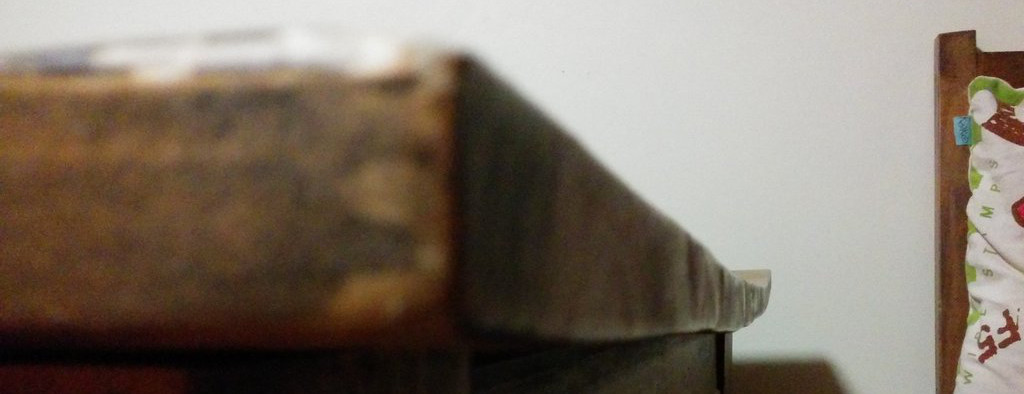Seasonal wood movement is real.

I am pretty active on /r/woodworking, and at least once a week someone comes along and posts pictures of their first project. I always open these posts with a little bit of trepidation. On one hand, these people are super excited to share their first project and some are really cool. On the other hand a large number of them have cross grain glue ups or fail to account for wood movement in some other way. When this happens I cry a little on the inside, because no one on /r/woodworking/ wants to discourage someone just starting out, but the sooner they learn about wood movement the better off they will be.
So someone takes it on themselves to inform the person that their project might explode or otherwise fall apart. It is a tricky thing to balance, because you want to say they did a good job, but if the thing they made falls apart 6 months later clearly they didn’t do a good job. Also you want to say it in a way that they will take it seriously next time.
Despite all this, there are also the wood-movement deniers. These people respond saying that they think that given modern climate control wood movement is not the issue it used to be in the past. I’d like to think that I can inform them otherwise with this blog post but I have my doubts.

Modern climate control systems regulate temperature, but do not actively regulate humidity. In fact, they can even exacerbate seasonal humidity changes. The big factor for wood movement is relative humidity, which is the percentage of water in the air relative to the maximum amount of water the air can hold. For example, when the relative humidity reaches 100%, it usually rains.
The absolute amount of water that air can hold is related to air pressure and the temperature. Lower air pressure also lowers the amount of water the air can hold, which is why the L’s on the weather map generally mean rain. Higher temperatures can also hold more water.

What does this mean for wood?
In the winter, colder weather means there is less water in the air, so when your furnace warms up your house, the relative humidity drops like crazy. This is why all the wood in my house is shrinking. The warm dry air circulating through my house has been pulling the moisture out of my furniture for the last two months. Gaps have appeared in the Adirondack chair I made for my daughter six months ago. Our floors have become extra squeaky, and the poorly laminated legs of our dining room table are literally pulling themselves apart.
In the summer, warmer weather means more water in the air. Even if you don’t live in a part of the country that gets uncomfortably humid, warmer temperatures means the air is is going to hold more moisture than in the winter. The moisture levels in the air and the wood it surrounds really want to be equal, so our furniture pulls moisture out of the air and is happy.

The top of this table is forever misshapen because its maker (luckily not me) did not properly account for our warm, humid summers. Air conditioners have special tubes so that they drain condensation outside, instead of making pools of water. Many people think that this means that the air conditioning regulates the humidity in the house. While ACs do tend to remove some moisture from the air, they don’t lower the humidity anywhere near what is common in the winter, especially if a house is heated in the winter.
By far the most problematic piece of furniture in our house is the cheap factory made table in our dining room. The other things move some, but move with a little more grace. Don’t be fooled by the non-believers, wood movement is real. Luckily, the way we imagine furniture is based on seeing stuff that follows centuries of wood movement best practices, so it isn’t too hard to design/build stuff that handles movement like a champ.
Two great books that discuss wood movement
I receive no form of compensation for recommending these books. I plug them here purely because they are great books and deserve a spot in your shop library.
- “With the Grain: A Craftsman’s Guide to Understanding Wood” by Christian Becksvoort - It is a fantastic book about just about every aspect of solid wood. It has a lot of really great information about wood movement for different species of wood.
-
“The Essential Woodworker” by Robert Wearing - This book is a great introduction to joinery and hand tool wood working. In several places it discusses wood movement and techniques to work with it.
- Part 0 - Seasonal wood movement is real.
- Part 1 - Let it move!
- Part 2 - Mortises and Tenons
- Part 3 - Dovetails
- Part 4 - Making Panels
- Part 5 - Undecided…
A very interesting look at woodworking joints and a lot of their variations can be found in this small book Woodwork Joints: How to Make and Where to Use Them by “A Practical Joiner”. This small book was published in 1915, and shows all kinds of interesting joints and explains how they are used. That said, It doesn’t really talk about wood movement very much.
